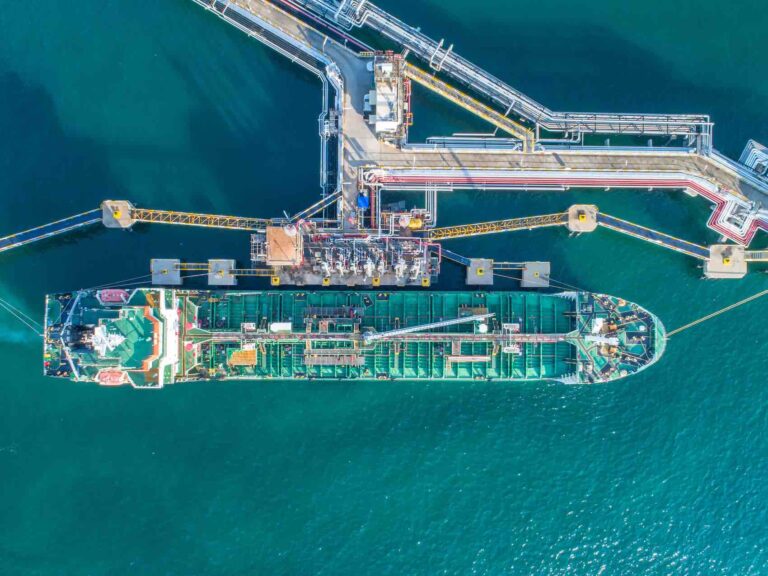
Incidents of piracy at sea may be at their lowest for 27 years according to the ICC International Maritime Bureau, but the threats remain significant, demanding fresh data-driven approaches as well as security hardware
While the Indian Ocean – especially the coast of Somalia – was for years the world’s most dangerous area for piracy, now the Gulf of Guinea is where global anti-piracy focuses its attention. Even though incidents there last year were more than 60 per cent down on 2020, crews continue to face hostage-taking, kidnap, and violence. More than 70 seafarers were kidnapped over the year and last September, for example, pirates fired assault rifles, injured crew, and abducted an engineer from the MV Tampen that had anchored off Gabon. Although many attacks occur in in-shore waters, pirates in this region are also ready to venture far out to sea in search of quarry.
The Singapore Straits and waters around Indonesia and the Philippines also continue to witness acts of piracy. And, despite the global decline in piracy last year, incidents continued in South American waters and in anchorages off Haiti. Despite many collaborative initiatives, and programmes such as the EU Coordinated Maritime Presences for the Gulf of Guinea, it is unlikely piracy will be eradicated. The Straits of Malacca have been a hotpsot for piracy for decades, for example, and endemic poverty in coastal west Africa provides a pool of labour that criminal gangs exploit.
An increasing role for digital solutions
The continuing battle against piracy demands that shipping operators revise their approaches in an era of digital innovation. While most vessels already carry a wide array of systems for identification, navigation, cargo handling, and weather monitoring, they need to integrate faster alerting and a broader range of intelligence sources, providing greater insight and a more streamlined approach.
At the very least, vessels carrying ship security alert systems (SSAS), should conduct more thorough testing. These systems are required under the International Ship and Port Security code. They silently alert owners, flag states, and authorities when they are undergoing armed robbery or piracy. The hardware of a SSAS management solution onboard a vessel should automatically display alerts, tests, and position reports on a web-based SSAS management service, providing all the necessary data to mitigate risks in the event of a security event. Onboard hardware should automatically display alerts, tests, and position reports, providing customised test alert profiles and unlimited numbers of recipients.
Real-time risk assessments and maritime domain awareness
More far-reaching, however, is the need for operators to integrate intelligence on piracy risk into their monitoring technology so they have a solution providing insight before and during a voyage. Maritime domain awareness platforms increasingly fulfil this requirement, allowing users to track, monitor, and review the historical movements and ongoing progress of any ship. They provide complete situational awareness by monitoring a vessel from different perspectives, enabling operators to identify specific risks in what is effectively real time.
A domain awareness platform will combine the tracking systems most vessels already employ, but to far greater effect. Commercial vessels are obliged to operate AIS (automatic identification systems) and LRIT (long-range tracking and identification technology). AIS broadcasts the vessel’s ID and position on VHF (and satellite), and complies with the International Maritime Organisation’s Safety of Life at Sea Regulations (SOLAS). LRIT, a satellite-based technology, is an IMO-designated closed loop reporting system that flag states and port states employ for security and safety. A domain awareness platform combines these sources, plus Inmarsat positional data, to provide persistent, real-time tracking.
They can include real-time reports of piracy events, along with forecasts and risk assessments based on factors such as sea state and weather. Predicted sea state should be part of continuing piracy risk assessments, correlating wave height and weather with historical patterns of illegal behaviour in specific areas, enabling operators to re-route where necessary. Wave height is significant because pirates frequently use smaller vessels and such intelligence adds to the insight that operators can act on to reduce their exposure and improve crew safety.
The most effective maritime domain awareness platforms integrate these capabilities and provide operators with customisable intelligence about events in specific areas or time-frames, covering kidnapping, ransom, hijacking, and armed robbery, alongside terrorist attacks and other maritime crime. This reduces complexity and improves decision-making to enable faster responses.
Faster action from better intelligence
An operator can monitor each vessel’s progress on its voyage, continuously monitoring speed and estimated time of arrival. But when the vessel deviates from its predicted path, the operator will automatically receive an alert, enabling them to check and collaborate with the relevant authorities in the event of a hijack or piracy attack. They can then mobilise assistance far more quickly and effectively, and minimise further risk.
More effective surveillance for all stakeholders
The entire world is becoming more data-driven, and the shipping industry should be no exception. Data and actionable intelligence are now essential to the business continuity of ship operators, to safety at sea, and ultimately, to competitive advantage. For governments, flag administrations, and maritime authorities concerned about security, maritime domain awareness solutions facilitate the safeguarding of waters and ensure the success of coastal surveillance operations.
Right across the shipping industry and its complex ecosystems of charterers, forwarders, operators and carriers, streamlined domain awareness platform technology should be a critical weapon in the battle against violence, kidnap, and robbery at sea. The current decline in piracy may only be a lull and should not be an excuse for complacency or inaction.
About the Author
Julian Longson is CEO at Pole Star. At Pole Star, we develop pioneering maritime intelligence technologies to protect our customers’ vessels, people, reputation, and financial investments. Since 1998, we have pushed the limits of innovation, working with governments and businesses across the supply chain to mitigate the growing threats to ships, supply chains, cargo, territorial waters and, most importantly, lives within the maritime infrastructure and beyond.
Featured image: ©Magnifier